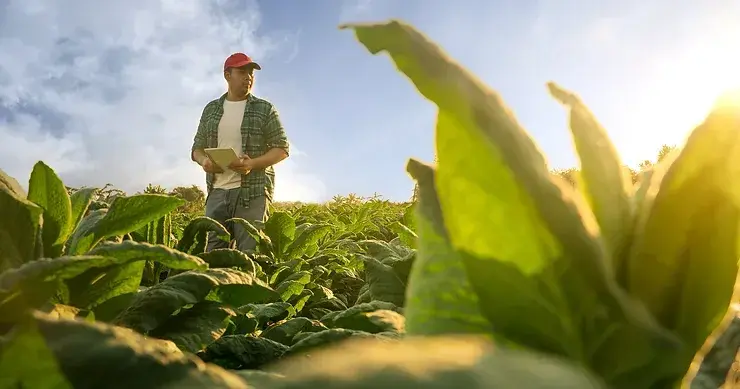
Breaking Down Biologicals: How the Industry and Individual Companies Can Scale

This article is the second installment in our series on biologicals, which aims to explore the obstacles and opportunities for the sector. In the first article, we looked at what biologicals are and their current state in the market. In this article, we will explore the growth opportunities for the industry and for individual companies.
In our previous article, we looked at the market opportunity for biologicals to support more efficient and sustainable agricultural systems to improve food security and environmental outcomes. We noted that while biopesticides currently represent just 8 percent of the $65 billion total crop protection market, they are projected to reach 25 percent by 2035. And while biostimulants and biofertilizers comprise about 2 percent of the global fertilizer market, they are estimated to be worth $24.7 billion by 2027.
But what will it take to realize this potential and get from where we are today to robust market adoption? Our view is that increases in data collection, education, partnerships, and funding can all progress the biological industry and substantially increase adoption.
Data
One theme continuously emphasized at the Salinas Biological Summit was that farmers want more data on efficacy and environmental impact to deploy biological products at scale. But the concept of efficacy is more complex with biologicals. As we discussed in the last article, there is only so much that lab data can tell us about how a product will perform in the field.
But with the proliferation of IoT and sensor technologies, we are better equipped to gather real-time data on soil health, moisture levels, and pest populations. Our view is that these technologies help enable crop health tracking and treatment effectiveness and can provide a much more nuanced understanding of how well and under what circumstances biologicals work. They can also help agronomists and farmers optimize applications. We believe biological input companies can embrace these innovations by partnering with agriculture hardware + software providers to provide robust crop data and insights to growers.

Education
We believe the increased adoption of biologicals will require improved education for all stakeholders, from farmers to agronomists, distributors, and policymakers. This includes information about what biologicals can do and how they should be applied as well as bigger-picture education about shifting the paradigm from single chemical solutions to systems-based solutions. Many farmers are increasingly looking for combined strategies and a host of tools they can use to improve yields and environmental outcomes. But our view is that telling a farmer that a biological product can improve nitrogen uptake or combat certain pests is not enough — nuanced messaging about how these products fit holistically into their operations is required. This may hinge on educating agronomists and PCAs so they can serve as system integrators for farmers.
There is also an opportunity for the industry to educate regulators further about mechanisms of action and environmental impacts to help improve regulatory processes. Lastly, we feel consumers are also a vital part of this equation. Consumers want more sustainable products, but labels can be confusing, and biologicals can be challenging to understand. Biological companies should introduce the concept of biologicals to consumers with a clear value proposition to increase market demand.
Partnerships and Capital
As in many other sectors, partnerships will be a helpful tool for innovating and scaling production and adoption. There is opportunity for corporates who know how to scale production but may be struggling to innovate to partner with more agile startups. Partnerships between farmers or agronomists and companies also help create opportunities for more comprehensive on-farm trials and farmer input. Involving farmers in the product design process can signal that a product is effective, can fit into their operations, and will be adopted.
Last, the research, development, testing, and large-scale production of these products typically require substantial financial resources. Increased capital investment will help propel the progress of the biological sector.

The Keys to Success
So now we’ve looked at the factors that could help progress the industry, but what do individual companies need to do to succeed in the space? At S2G, we look at many biological companies, and we are invested in a handful of them. We strongly believe in the importance of biologicals for the future of agriculture. But considering the obstacles and the crowded market, we feel that companies should adopt certain strategies to stand above the fray and scale. Here are some of those critical approaches:
Make adoption easy for the farmer.
This means ensuring the product can fit seamlessly into farmers’ preexisting systems. This could entail, for example, offering multiple viable application methods to align with growers’ current practices. Ease of adoption can also depend on economics. Yield enhancement and a reduction in overall input costs are the primary motivators of growers using crop biologicals.
Figure out how your product works in combination with other biologicals and chemistries.
We believe the consensus at the Salinas Biological Summit was that biologicals will not replace chemicals, especially not in the short term, but they help reduce chemical use and improve efficacy. The more you can educate buyers about how your product works in tandem with other chemicals and biologicals, the better.
Stay focused on your go-to-market approach.
Be the best at what you do. Try to win in one crop type, in one product category in one geography, and then keep building from there. If you can prove efficacy in one area, it can help you gain customer trust.
Figure out formulation and manufacturing early on.
We believe products should be cost-competitive before they reach commercial scale, which requires formulation and manufacturing focus alongside the development of the product’s technical specs to ensure products are still viable when it’s time to scale.
Consider your product’s value throughout the supply chain.
From the growers to the retailers and the distributors, can you retain value for these buyers as commodity prices fall (fertilizer, row crops, etc.)? If your product is only attractive when synthetic fertilizer or row crop prices are high, it can be difficult to maintain customers in a volatile market.
Build the breadth and depth of your IP.
From production to strain selection and formulation, IP is critical for protecting unique biological technologies and formulations. By strategically expanding IP assets, companies can establish a competitive edge and in our view foster a culture of innovation.
Pick your dream team.
Find the right balance of agriculture, biology, and engineering industry veterans. This can help ensure that products are scientifically airtight, technologically feasible, and tailored to real-world agricultural needs.
Make sure you have the right financial partners.
Working capital can be challenging to manage. The right financial partners understand the ins and outs of the industry and can provide tailored funding solutions that support long-term growth and innovation.
We are excited about the promise of biologicals and will continue to support our portfolio companies and the larger industry to gain market adoption and improve financial and environmental outcomes in agriculture.
Image Source: Adobe Stock


